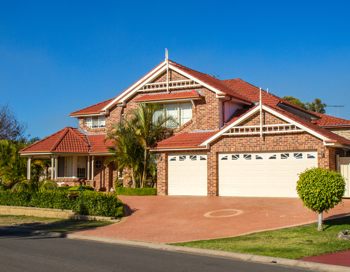Low Deposit Home Loans – All Your Questions Answered
What are No or Low Deposit Home Loans?
No or Low Deposit Home Loans require a lower deposit to secure the home loan. Most lenders require you to pay lenders mortgage insurance (LMI). If a Limited Guarantee is available, then LMI can be eliminated potentially saving thousands.
How can I borrow more than 100%?
Yes, a Limited Guarantee is the only way to borrow 100%+ of the purchase price in Australia as traditional no deposit home loans have been withdrawn from the market to protect the consumer and banking sector. With the help of a guarantor you can borrow up to 105% of the purchase price, allowing you to buy a home and pay for purchasing costs such as stamp duty. Lender policies vary for these types of loans and while one lender may not fit your personal situation, another may offer a policy that fits perfectly.
What is the difference between Genuine and Non-Genuine Savings Loans?
Genuine Savings – Whilst there are varying policies between lenders, most Genuine Savings loan applications require proof that you have saved a 5% deposit prior to a loan approval being provided, they generally request 3 to 6 months savings account statements to check the savings pattern and large, one off deposits generally require explanation. Again, there is some difference between lenders although large deposits can be made up of a gift of funds from family, sale of an asset, a bonus tax refund, commission and inheritance. Genuine Savings loans usually offer a more competitive rate and flexible lending products.
Non Genuine Savings – If you have not had your deposit in your account for 3 or more months but you are able to show bank statements showing that you have funds available to cover the 5% deposit and purchase costs, there are Non Genuine Savings Loans available. You may be able to secure a competitive interest rate, however generally the rate can be slightly higher and may incur additional fees.
Please see another post of ours about Genuine and non genuine savings
Do I have to Pay Lenders Mortgage Insurance (LMI)?
While Mortgage Insurance may initially seem like an unnecessary cost, in reality it could be the tool that helps you get into your home sooner rather than later. In most cases lenders will charge LMI premiums on loans that are more than 80% of the purchase price or valuation of the property or from 60% for Low Doc loans. The amount you pay differs vastly the higher the loan amount (loan to value ratio). LMI is only paid once and it is insuring the lender and not to protect you, which is a common misconception. LMI can be capitilised (added) onto the loan for most loan applications. To avoid LMI completely, you will require a deposit of 20% of the purchase price, plus other funds to cover stamp duty and other charges.
When should I apply for the loan?
Don’t apply for the loan until you are sure that your situation and the lenders policy match. Using a Mortgage Broker will be able to narrow the suitable lenders down for you to a short list for you to choose from. It is important to limit the number of credit enquires to the bare minimum as this can have an effect on your application assessment. Each application that you make creates a credit enquiry on your Credit Record and these should be kept to a minimum.



